When I set out to review the Axil SportEar M4 electronic hearing protection, I was fairly excited.
I had not used a SportEar product before. However, the technology and features touted by the company’s marketing information suggested this would be a great product.
Unfortunately, the Axil SportEar muffs were a disappointment due to poor comfort, mediocre noise attenuation and the use of a (not included) non-standard stereo cable to listen to streamed music. They had some upsides, but not nearly enough to make up for the deficiencies in my opinion.
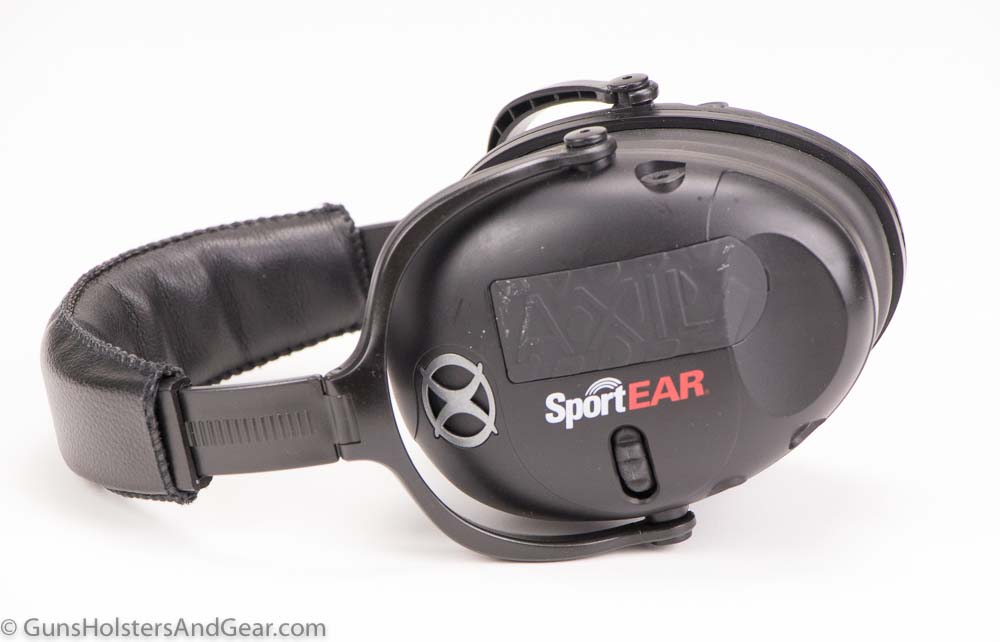
For an abbreviated SportEar M4 review, skip to the TL;DR section. Otherwise, continue reading for the full story.
Why Trust Me
I’ve been involved in shooting as a recreational shooter, CCW practitioner, law enforcement officer (former) and gun writer for nearly 30 years. I’ve used a lot of different kinds of hearing protection and have interviewed audiologists and engineers. Additionally, I’ve reviewed a broad range of research papers on the subject of noise reduction and hearing protection.
I have suffered some reduction in my own hearing, and want to protect what remains. I also want my children, family and readers to have the best protection possible.
Of course, a review is only useful if you trust the opinions of the reviewer. Many popular gun websites accept payments to write “reviews” of gear and fail to disclose this information to its readers.
That is not how I do business. Instead, I fully disclose things that might influence my article.
Axil is not an advertiser, nor am I in any talks with them to be one. I have not been offered, nor have I requested or received any renumeration for writing this article.
The muffs provided for this review were provided by Axil with the intent that I test them and write about them. Additional information is located in the full-length disclosure section at the end of this article.
TL;DR
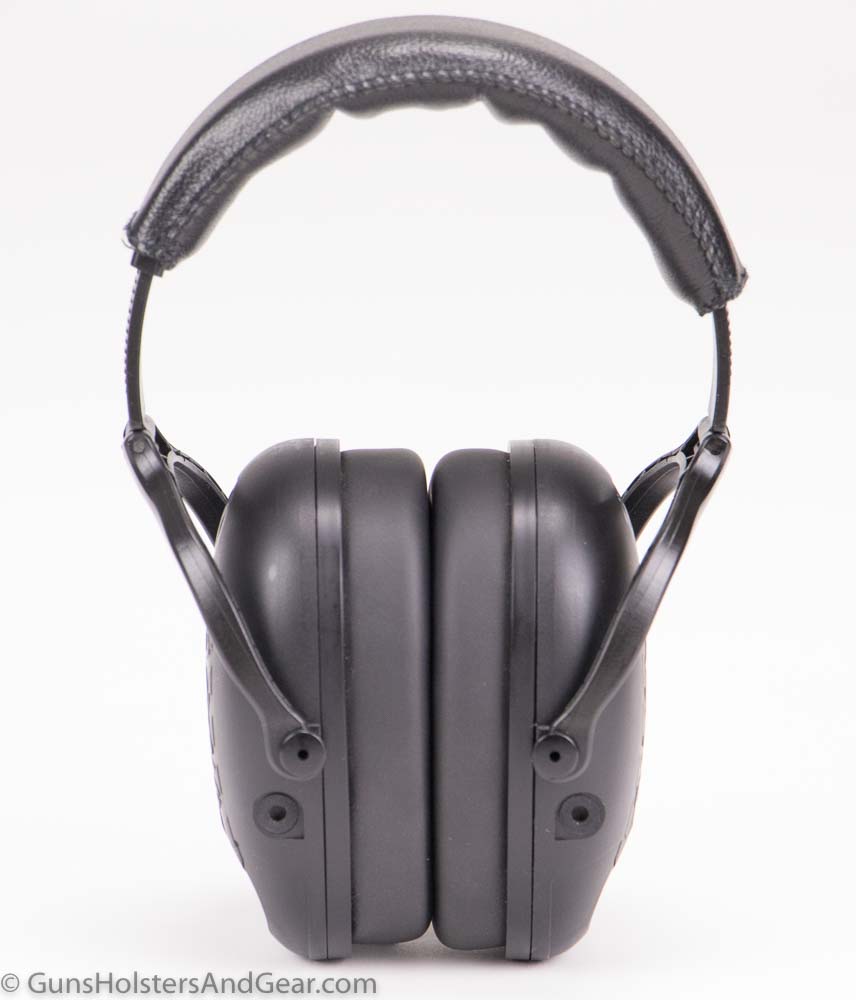
In my opinion, the Axil SportEar M4 offered only average noise reduction with a street price that tends to hover around $90. While its four mics do provide a good feeling for the direction of sounds, its voice reproduction was only average.
Music reproduction was sub-par with little bass and muddied highs. To get sound into the M4 muffs, you need a special cable that physically routes each channel to a different ear cup. You cannot get stereo sound using a standard 3.5mm patch cord as the two cups are not connected.
To top it off, I found the SportEar M4 to be remarkably uncomfortable. For me, the head band is too narrow and tight, so it pinches the top of the head and places a lot of pressure on the sides of the face. If you have temporomandibular joint disorder (sometimes called TMJ), they can be particularly uncomfortable.
I much prefer the Howard Leight Impact Pro for superior noise reduction and the Peltor Sport Tactical 500 for clearer voice reproduction and improved comfort.
Basics
The SportEar M4 is a muff-style hearing protector. It features two over-the-ear cups connected by a single polymer headband. The cups have rubber-like gaskets for a seal, and the headband is padded.
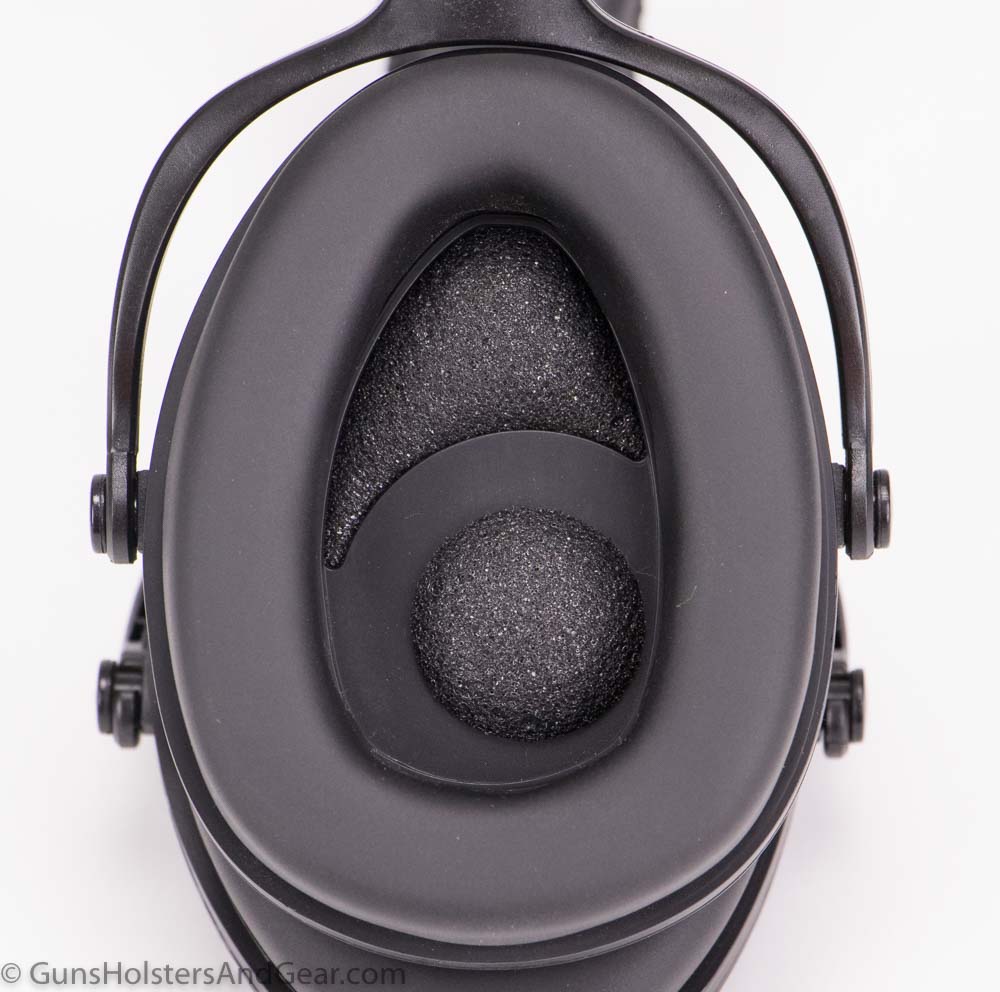
SportEar includes a pair of electronic amplification circuits – one in each ear cup. These circuits are designed to take input from two mics on each cup (one facing forward and one rearward) and amplify normal sound levels.
The circuitry is designed to cut out when a loud noise is encountered so that the noise is attenuated passively by the muffs. The noise cutout is set at 85 dB. According to the company, the muffs provide 25 dB of sound attenuation.
Each cup has an independent volume adjustment to allow the shooter to set the optimal level of conversation “boost” for his/her needs.
The M4 also has 3.5mm mono inputs – one on each cup.
SportEar M4 In Use
No matter how interesting a product looks in the office, its how it performs on the range that will make or break it. At the range is exactly where I tested the SportEar M4.
Comfort
While I discovered several things about the M4 ear pro that I did not like, the discomfort of these muffs was at the top of my list.
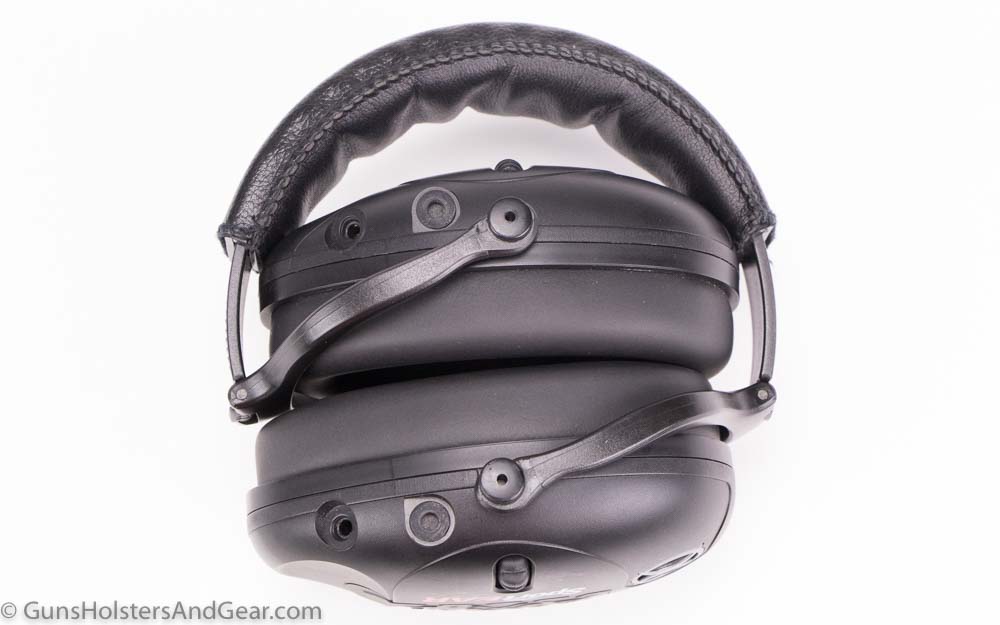
I believe the shape of the headband is the most likely culprit of the discomfort associated with this hearing protection. It appears to be narrower than other kinds of muffs with nearly a rounded point at the peak. This caused the sides of the head band to press in on the crown of my head creating uncomfortable pressure there almost immediately.
Secondly, the muffs were very tight on the head. I mean -really- tight. They place a lot of pressure on the sides of the face, with much of it pushing in on the temporomandibular joint. If you suffer from temporomandibular joint disorder (frequently called “TMJ”) these will likely be even more uncomfortable to wear.
I wore these at the range for several shooting sessions, and both times I wanted to take them off and put on something, anything, else.
The headband appears to be made of a hard, resilient plastic that resists bending. I attempted to improve the comfort of these muffs by stretching the ear cups out and away from each other. Unfortunately, this did not seem to help.
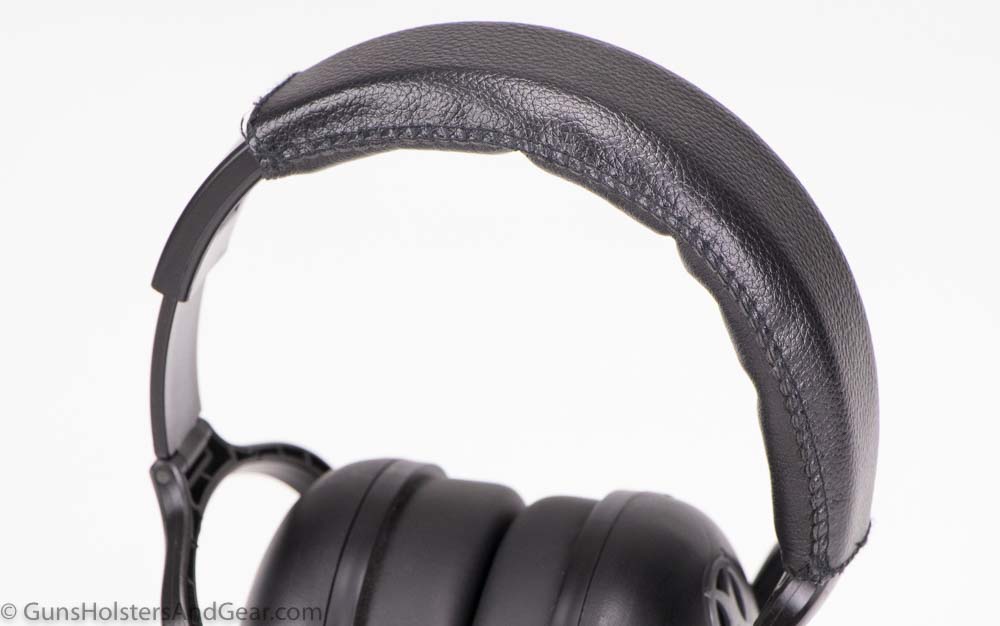
A faux leather cushion covers part of the headband. It is not attached to the band, so it has the tendency to slide out of position when donning the ear pro. The padding it offers appears minimal.
On the plus side, the soft surrounds on the ear cups seemed to be made of a thick rubber-like material with ample padding on the inside. They seemed to form a good seal around the face when glasses were not worn. They did not seem to wrap around the arms of glasses well, and seemed to press the arms in on the face more than other muffs I have worn.
Noise Reduction
According to the company, these muffs offer a Noise Reduction Rating (NRR) of 25 dB. A dB, or decibel, is a unit of measurement for sound levels. In layman’s terms, when you crank the volume knob on your stereo, the measured sound output increases. The amount of sound output is measured in decibels.
In my experience, a NRR rating of 25 dB is fairly middle of the road when it comes to hearing protection for shooters. Some of the top hearing protection muffs for shooting have a dB rating of 29 or more. While that may not sound like much, it is. The decibel scale is logarithmic. This means that a 3 dB increase equates to a doubling of the sound output. In this case, reducing an additional 3 dB of noise is a noticeable difference.
To me, the SportEar M4 muffs offered only mediocre noise attenuation. That is to say, I was not impressed by them in comparison to competing products.
As I mentioned above, I found that the rubber-like gasket on each cup did not fully wrap around the arms of shooting glasses. This allowed more noise to enter into the cup than if I was not wearing safety glasses. I’ve used other muffs that do a better job at mitigating this problem (see the final thoughts section at the end of the article for more information on other ear pro that offer better attenuation with glasses.)
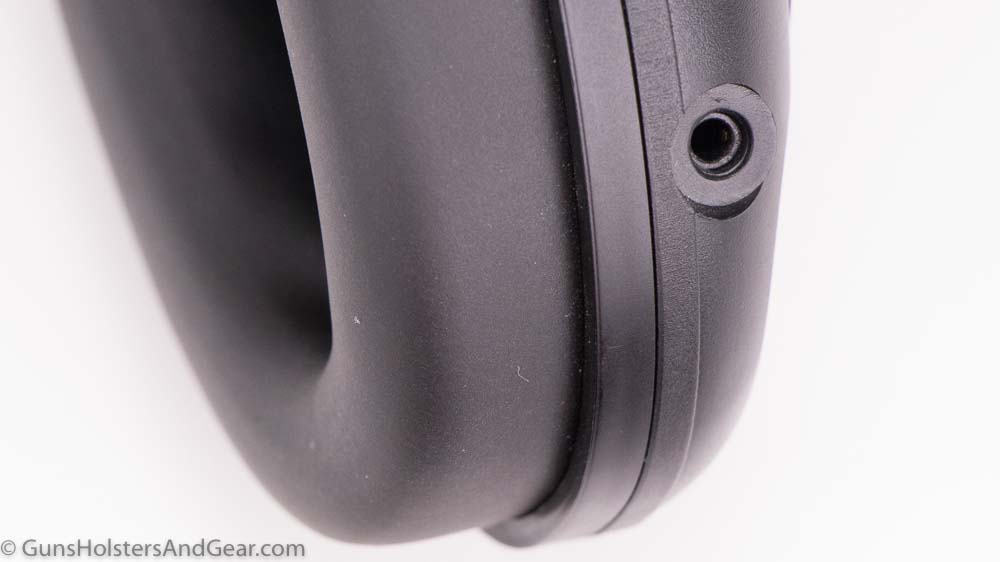
Sound perception, and consequently noise reduction, is a highly subjective thing. Each person is sensitive to different areas of the audible spectrum. So, my experience may very well differ from yours.
I typically wear ear plugs with ear muffs for the most hearing protection I can reasonably obtain. Studies vary on the effectiveness of this technique, but all are in agreement that hearing protection is significantly improved through this technique.
With electronic ear muffs like the M4, you can amplify normal sounds to be more clearly heard even with the plugs. Yet, the muffs and plugs work together to dampen the harmful report of a gunshot.
When I used ear plugs with the M4 muffs, the noise attenuation was very good.
Audio Clarity – Speech
Clarity of speech is important in electronic hearing protection as its the primary reason why someone would spend the additional money over passive ear muffs.
Unfortunately, I found the SportEar M4 muffs did not offer great speech reproduction. Without plugs in, I found that that voices were somewhat muddied rather than clear and distinct.
The mics seemed to do a good job with helping me orient from where voices were coming. So, I suspect the problem is in either the amplification circuitry or speakers.
Music Reproduction
While I was disappointed by voice clarity, I was downright horrified by the M4s ability to reproduce music. The sound music reproduction reminded me of the old in ear speakers that used to come with the transistor radios of the 1970s. If you would like to listen to music while shooting, these muffs may disappoint you.
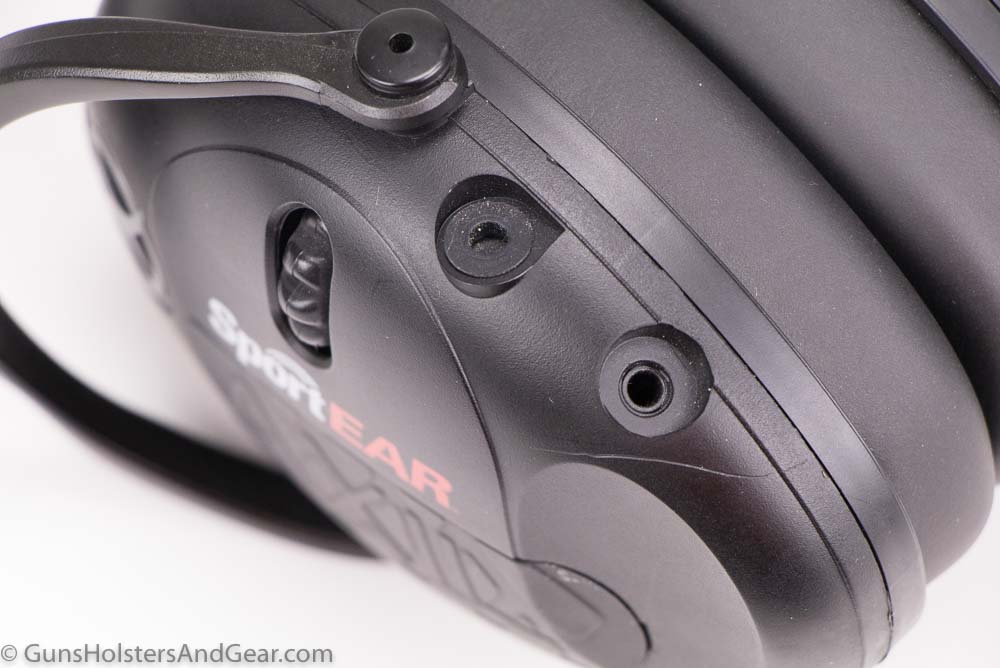
While this did not go directly to the reproduction quality, it should be noted that you cannot use a standard 3.5mm stereo patch cable to connect your phone or iPod.
The two cups of the SportEar M4 are completely independent from each other. This means you have to have a cable that splits the left and right channels. So you wind up with a Y-type cable with a single plug for your playing device and then two single channel cables that go to the two ear cups.
This is an added level of difficulty for the user as most people do not have such cables at home. With the disappearance of Radio Shack, you might be required to order one of these specialty cables online and wait a few days for its arrival.
I’d argue that the cable is not standard and should be included as a part of the SportEar M4 kit. If nothing else, this would save Axil customers a degree of frustration with the product.
Controls
There are only two controls: one dial on each ear cup that controls the volume for each cup. These worked as expected.
There is an audible and tactile “click” when the dials are turned on and off.
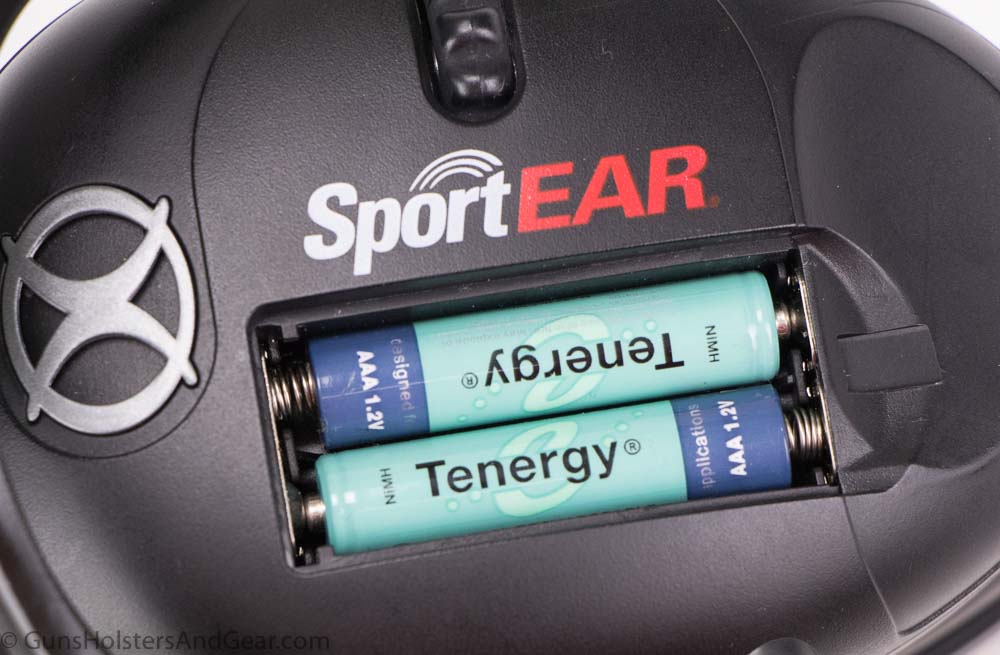
Update: Discontinued?
Since testing the SportEar muffs, the product disappeared from the company’s website. I contacted a customer service person who advised that the product was simply out of stock, but he was unable to provide any information on when the product might return.
It is unlikely that a company would take down a product page just because the item is out of stock. I suspect the M4 electronic hearing protection has been discontinued.
If you are interested, you can see the old product page at the Internet Archive here.
Final Thoughts
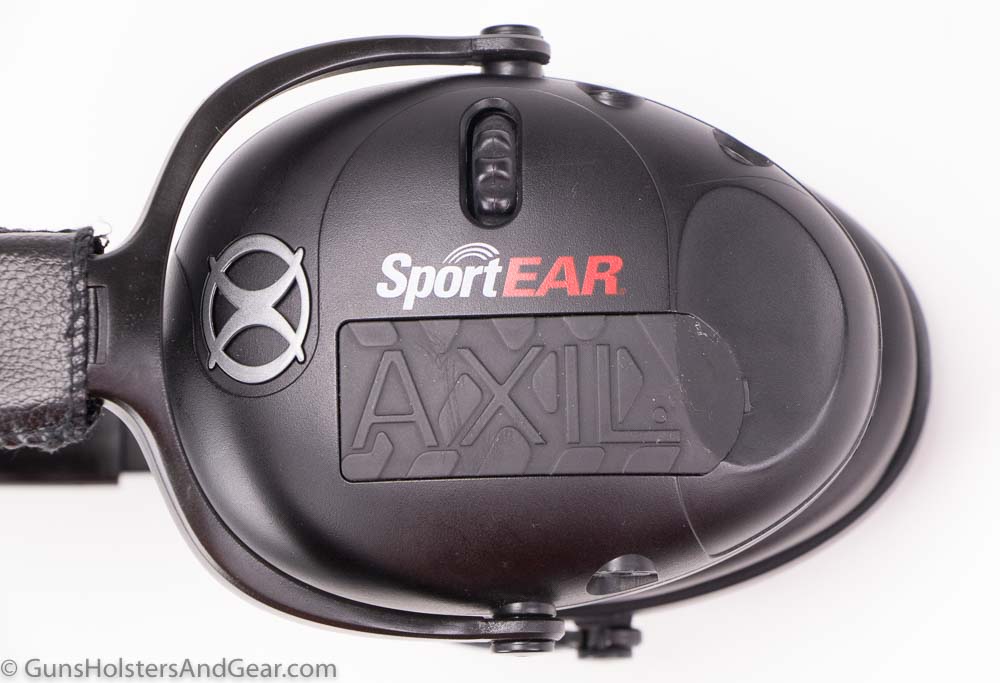
Based on my experience with it, I do not recommend the SportEar M4 electronic hearing protection for purchase. However, if you decide you want one anyway, you can order it by clicking here.
I do have a pair of recommendations for other ear pro that are much better products.
The first is the Howard Leight Impact Pro. This is a muff-style electronic hearing protector that offers dual mics, good comfort and excellent noise reduction. You can read my review of them by clicking this link.
The other recommendation I have is for the Peltor Sport Tactical 500. They are a little more expensive than the Impact Pro, but offer great voice amplification and really good comfort. You can read that review by clicking here.
Disclosure
As with all of my reviews, I fully disclose everything that might affect my judgement of this product. If you read a review on another site or in a magazine that does not offer a disclosure, you should ask yourself why.
I have no business relationship with SportEar or Axil, they are not advertisers nor am I in any discussions with them to be one. I do not accept advertising on this site. Additionally, I have no business interests in any company related to the shooting, hunting or outdoors industries.
The muffs reviewed in this article were provided without cost by Axil/SportEar. No money was offered, asked for or accepted to write this review. No promises were made to do a positive review of the product (which should be obvious if you read it), link to their website, etc.
All of the opinions in this article are my own.
GunsHolstersAndGear.com is an independent, for-profit website. I do not charge readers a dime to access the information I provide.
Some of the links on this page and site are affiliate links to companies like Amazon and Palmetto State Armory. These links take you to the products mentioned in the article. Should you decide to purchase something from one of those companies, I make a small commission.
The links do not change your purchase price. I do not get to see what any individual purchases.
If you have any questions, please drop them in the comments section below. Thanks!